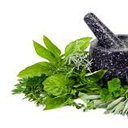Phytochemical and biological evaluation of Buddleja polystachya growing in Saudi Arabia.
Märksõnad
Abstraktne
Several Buddleja species were the target of phytochemical and biological studies; however, nothing was reported concerning the chemistry of Buddleja polystachya Fresen. growing in Saudi Arabia. Sixteen constituents were isolated from the aerial parts of B. polystachya using various chromatographic techniques and were identified by the help of different spectral techniques including 1D, 2D NMR and mass spectrometry. Moreover, the different fractions were evaluated for their anti-inflammatory and hypoglycemic activities. The isobenzofuranone derivative (4-hydroxy-7-methylisobenzofuranone) (4), has been isolated for the first time from this natural source, B. polystachya, along with fifteen known compounds namely; phenolic fatty acid ester, 1'(4-hydroxyphenyl) ethanol ester of docosanoic (1), uvaol (2), sakuranetin (3), kumatakenin (5), cirsimaritin (6), 5-hydroxy-3,7,4'-trimethoxyflavone (7), oleanolic acid (8), herbacetin 3,7,8-trimethyl ether (9), ursolic acid (10), verbascoside (11), linarin (12), luteolin 7-O-β-D-glucoside (13), luteolin 7-(6"-caffeoyl)-O-β-D-glucopyranoside (14), luteolin (15), and 6-O-α-L-(4''-O-trans-cinnamoyl) rhamnopyranosylcatalpol (16). Regarding the biological activities investigated, the ethyl acetate fraction showed the most significant anti-inflammatory activity, followed by the n-butanol and the aqueous fractions. As for the petroleum ether and dichloromethane fractions, their anti-inflammatory effects were moderate. The highest hypoglycemic activity was possessed by the ethyl acetate fraction, followed by the dichloromethane fraction and the n-butanol fraction showed the weakest activity.


